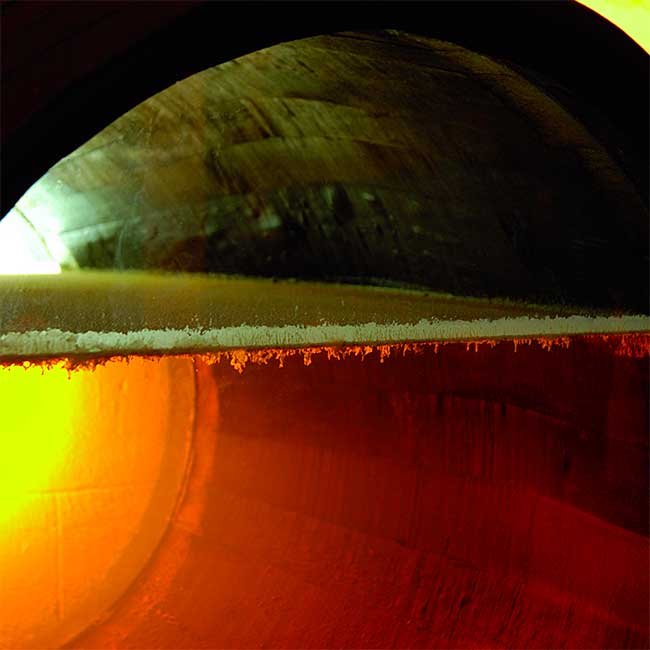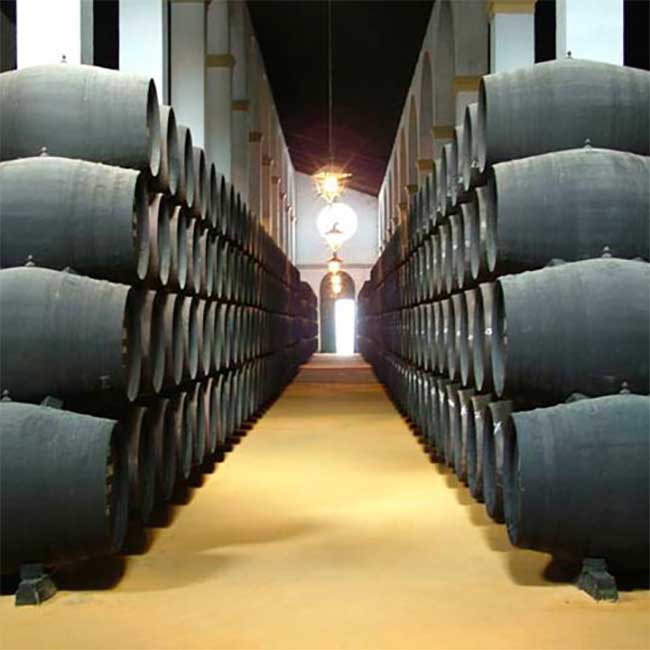.png.transform/rendition-xs/image_image%20(1).png)
The Biological Blends of Fino and Manzanilla Sherry Wines
In a previous article titled the ABCs of Sherry, Wines from Spain provided an overview of the Manzanilla and Fino fortified wines, which we hope will serve as a primer for the single-subject articles that we’ll begin here.
In a previous article titled the ABCs of Sherry Wines, Wines from Spain provided an overview of the Manzanilla and Fino fortified wines, which we hope will serve as a primer for the single-subject articles that we’ll begin here.
Biologically aged sherries are those matured exclusively under a layer of flor yeast and are labeled as Finos, unless produced in Sanlúcar de Barrameda where they’re called Manzanillas.
According to Peter Liem and Jesús Barquín in their book Sherry, Manzanilla & Montilla, biologically aged wines likely originated in Sanlúcar in the late 18th century. While it’s true that oxidative styles of sherry have been fortified for hundreds of years, it’s believed that the original Finos and Manzanillas were in fact unfortified and meant for local consumption. As the style grew in popularity and started to be exported in the early 19th century, fortification became the norm, ensuring a safe journey abroad.
Today, both Fino and Manzanilla start life as a dry white wine of roughly 11-12% abv, made from the white grape Palomino. The foundation for this base wine is the delicate free-run juice obtained following harvest, which is preferred for biologically aged wines as it has the least amount of contact with grape skins and their tannins. This is crucial as tannins can interfere with the development of flor.
In the past, all juice would have been fermented in casks. Today, save for Finos such as Valdespino’s Inocente, practically all sherries are fermented in stainless steel. Higher fermentation temperatures of 20-25°C are preferred, as this produces a more neutral base wine that can better reflect the characteristics imparted both by ageing under flor and by the fractional blending system known as criaderas y solera.
What exactly is flor?

Flor is a generic term for a group of film-forming yeasts found in the Marco de Jerez with Saccharomyces beticus being the most common strain. They are distinct from typical fermentative wine yeasts, which do not form a film on the surface of a wine. Having said that, flor is not just a group of yeasts, it is the very definition of Fino and Manzanilla. Without it, these sherries would be unrecognizable as we know them today. Like a spoiled child however, flor is quite sensitive, and a series of factors come into play for it to develop successfully.
Firstly, the newly fermented base wines are fortified with neutral grape spirit to between 15% and 15.5% abv. This range is key, as lower levels of alcohol might allow undesirable yeast strains to survive, while higher levels would inhibit the growth of flor.
Flor yeasts also require large amounts of oxygen, which they consume in abundance. This is made possible by the fact that the 600 L casks in which the wines age are only ever 5/6th full.
Apart from oxygen, flor consumes sugar (resulting in wines that are bone dry), alcohol (the amount lost is balanced by the evaporation of water during cask ageing), and glycerol (reducing the fattiness and viscosity of the wine). The loss of glycerol in particular radically alters the mouthfeel of Finos and Manzanillas by making them lighter and more delicate than their 15% abv would imply. This in turn makes them more refreshing and compensates for their relatively low levels of acidity.
However, it is not just what flor consumes but also what it creates that makes for such inimitable wines. The key contribution is acetaldehyde, a volatile compound that is up to 10 times more common in biologically aged sherries than in still wines. It adds a range of flavors that may include yeast, bread dough, lemons, almonds, Mediterranean herbs, chalk, apple cider, oyster shells and even sea spray.
As flor is also sensitive to heat, wines aged closer to the coast such as in Sanlúcar de Barrameda develop thicker layers of flor compared to Jerez. For this reason, Manzanilla wines often show the most pronounced flor character. Flor’s fussy temperature preference of 15-21°C during ageing also played a role in how the region’s iconic bodegas were built in the 19th century and how they’re managed today: high ceilings, thick walls and ventilation windows pointing west towards the cooling poniente winds all help to maintain that temperature, aided by the regular watering down of the albero dirt floors. Yes indeed, flor is the spoiled child of the sherry world.
The average age of Fino and Manzanilla

Like all sherry styles, biologically aged wines have their own solera systems. These are especially important for Finos and Manzanillas, as flor very much needs regular replenishments of new wine. Without it, the flor would ingest all available nutrients and slowly die off, initiating a period of oxidative ageing that would result in an Amontillado style.
By law, biologically aged wines must have an average age of at least 2 years in barrel before bottling, although higher-end examples are often aged between 4 and 7 years. The longer a Fino or Manzanilla ages in cask, the more savoury, nutty and broth-like its flavors can become.
Towards an Unfiltered Future

The majority of biologically aged sherries are highly filtered, often via active carbon, resulting in a more stable and paler wine. It is this style that dominates the Spanish market, representing over 75% of domestic sales. However, the past decade has seen important growth in minimal filtration wines known as en rama sherries. These are exclusive to Fino and Manzanilla, and advocates point to their greater depth of flavor, body and color as evidence of their worth.
As a whole, this style represents a tiny fraction of overall production, yet most major houses now produce an en rama version, providing an interesting contrast to the standard portfolio of Finos and Manzanillas.
This growing diversity of styles along with the affordable price points of most biologically aged sherries will hopefully encourage you to put your newfound knowledge to the test when finding the style that appeals to you most.
Text: Nygil Murrel.

